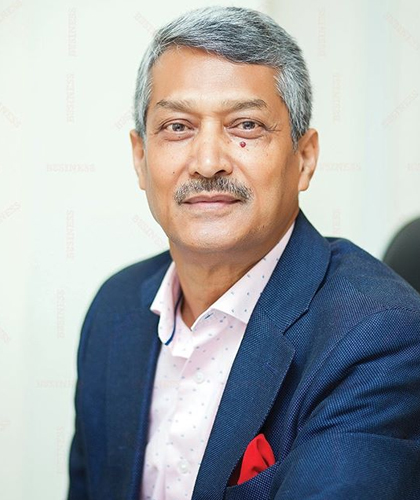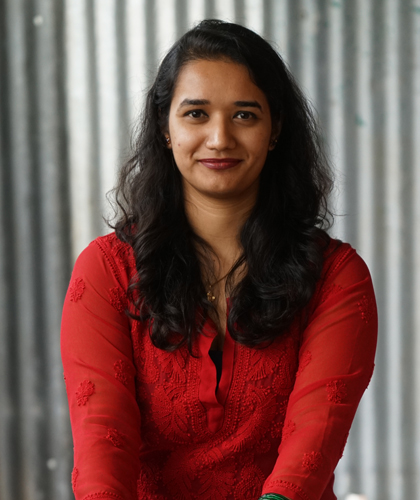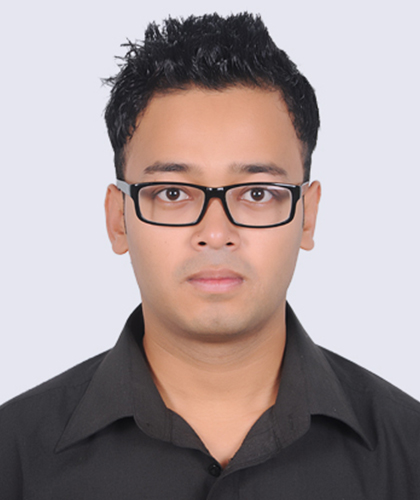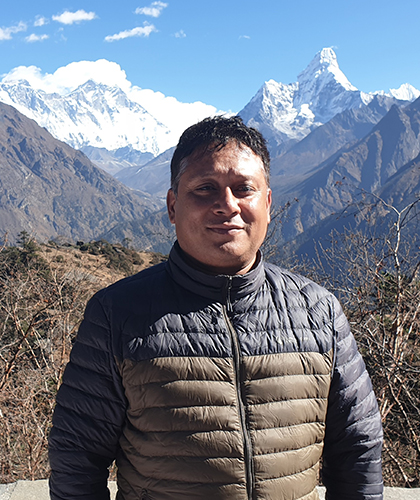Kathmandu and Beyond
Trip
Overview
Trip
Highlights
-
Get exposed to a visual feast of carvings and moldings on the nine storeys Pagoda palace.
-
One remarkable monument in Patan is 16th century temples dedicated to the Hindu go Krishna, built entirely of stone.
-
A temple of Panchamukhi Hanuman inside the old Palace which is one of the only two such structures in Nepal, the other is in Pashupatinath.
-
Get exposed to a visual feast of carvings and moldings on the nine storeys Pagoda palace.
-
Country
Nepal -
Duration
4 Days -
Difficulty Level

-
Accommodation
Overnight at the Hotel -
Guide
English Speaking Nepali Tour Leader
Route
Itinerary
Welcome to Nepal!
On arrival at Tribhuvan International Airport, a representative from our office will greet you at the airport and escort you to your hotel and help you check in. You will then be briefed about your daily activities.
Swayambhunath Stupa: aid to be around 2000 years old, this Buddhist Stupa sits atop a hill. The main stupa is composed of a solid hemisphere of brick and earth supporting a lofty conical spire crowned by a pinnacle of Copper gilt. Painted on the four sided base of the spire are the all seeing eyes of Lord Buddha. The hill of Swayambhu is a mosaic of small Chaityas and Pagoda temples. You'll get a scenic view of Kathmandu city from there.
Overnight at the hotel.Optional: Mountain Flight One of the must-see landmarks of Nepal is of course the highest peak in the world – Mount Everest. One awe-stricken silence can come close to matching the experience of going on a mountain flight to encounter the tallest mountains of this earth. Mountain flight offers a panoramic view of the Himalaya in a just one hour. Even those visitors who like the rigors of a trek still don't miss the opportunity to "conquer" the mountains in one fell swoop. This one hour flight takes you the Eastern Himalayan Ranges of Nepal, some of the highest peaks in the world including Mt. Everest The flight is an altogether different feeling as one comes face to face with the worlds tallest and most enigmatic of Mountains. Breakfast at the hotel.
Pashupatinath Temple: Pashupatinath Temple dating back to 400 A.D. is one of the oldest Hindu Temples dedicated to Lord Shiva. It is for the Hindus what Mecca is for the Muslims. Situated amidst a lush green natural setting on the bank of the sacred Bagmati River, the temple built in Pagoda Style with gilded roof and richly carved silver doors. Pashupatinath is the centre of annual pilgrimage on the day of Shivaratri which falls in the month of February/March. You'll also be able to see cremation grounds that lie on the bank of Bagmati behind the temple.
Boudhanath Stupa: One of the oldest and the biggest Buddhist monuments ever built in Nepal; Boudhanath is one of the holiest structures imposing a height of 36 meters with three massive level Mandala style platforms. It is surrounded by colourful buildings housing families creating a friendly enclosure. The Stupa is visited every year by tens of thousands of pilgrims from all over the world.
Patan City: Located about 5 km south of Kathmandu, Patan is one of 3 royal cities in the valley. A destination for connoisseurs of fine arts, Patan is filled with wood and stone. carvings, metal statues, ornate architecture, including dozens of Buddhist and Hindu temples, and over 1200 monuments.
Patan is believed to have been built in the third century B.C. by the Kirat dynasty later expanded and enriched by the Lichhavi and the Malla rulers in the medieval period. Patan Durbar Square, like its counterpart in Kathmandu, is an enchanting mélange of palace buildings, artistic courtyards and graceful pagoda temples. The former Royal palace complex is the centre of Patan's religious and social life, and houses a beautiful museum.
One remarkable monument here is 16th century temples dedicated to the Hindu go Krishna, built entirely of stone.
Overnight at the hotel.Breakfast at the hotel and transfer to Kathmandu Durbar Square.
The capital of Nepal is named after Kasthamandap, believed to have been built from the timber of a single tree a pagoda near Hanuman Dhoka Palace. This city was built by Gunakama Dev in 723 A.D. in its present form. During the tour of this city, a visit will be made at Akash Bhairab Temple which is in the main city. The image of Akash Bhairab will be displayed outside the temple for a week during the Indra Jatra, the festival of Indra- the god of rain. A tour will also be made of Kathmandu Durbar Square which is the historic seat of Royalies. "Durbar" means the Palace- This Durbar Sqaure with its old temples and palaces optimize the religious and cultural life of the people. It is the same place where kings of Nepal were crowned and their coronations solemnized. Here, you can see, Taleju Temple built by King Mahindra Malla in 1549 A.D.
The Gigantic figure of Kal Bhairab, the god of destruction. Basantapur Durbar or Nautalle (nine storey) built by King Prithvi Narayan Shah, Coronation Platform, the Hall of Public Audience (called 'Gaddi Baithak') the statue of King Pratap Malla, the big drums, and the Jagannath Temple with erotic carvings. There is also a temple of Panchamukhi Hanuman inside the old Palace which is one of the only two such structures in Nepal, the other is in Pashupatinath. There are also Numismatic Museum and Tribhuvan Museum inside the Durbar Sqaure Palace, where photography is prohibited. The museums remain closed on Tuesdays and on Government Holidays.
One can get exposed to a visual feast of carvings and moldings on the nine storeys Pagoda palace. You can also visit Kumari Temple (Living Goddess) which is situated in the vicinity of Hanuman Dhoka Palace. The Temple professedly carved wooden balcony and windows was built by Jaya Prakash Malla, the last Malla king of Kathamndu.
Kumari, who is also known as the Living Goddess or the Virgin Goddess, has got some unique virtues and must be from the Newari Shakya caste- a true virgin with no body marks or injuries. When she reaches the age of puberty, or cuts herself she is replaced by another one. Photography is prohibited, except once a year when she is taken out on a chariot in Indra Jatra festival. Afternoon free.
Overnight at the hotel.Breakfast at the hotel and free time for the last shopping before the transfer to airport for the journey onwards.
Meet
Our Experts
For Travel Agents

MR. BIJAY AMATYA
-
CEO, Founder
For Travellers

Ms. Neha AMATYA
-
Executive - Business Development

Mr. Deepak Gurau
-
Tour Officer

Mr. Sanjaya Moktan
-
Senior Manager tours

Mr. Saroj Bhatta
-
Tour Officer
Contact us
Base Camp, Basundhara, Kathmandu, Nepal
This email address is being protected from spambots. You need JavaScript enabled to view it.




 +977 1 5909976 / 77 / 78
+977 1 5909976 / 77 / 78